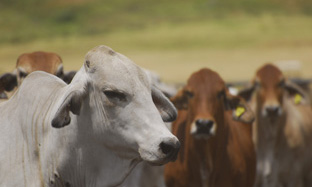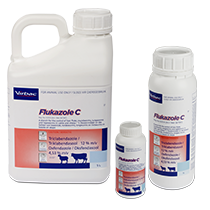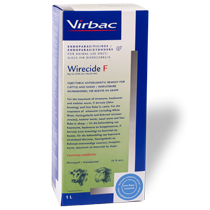
Liver Fluke - The Parasite
Fasciolosis (Liver fluke) is one of the most important parasitic diseases throughout the world including, South Africa.
Liver fluke infections in livestock are responsible for economic losses such as:
- Liver condemnation
- Mortality
- Reduction in milk and meat production
- Reduction in reproduction
- Secondary bacterial infections
OVERVIEW OF THE PARASITE
Two types of liver fluke occur in South Africa:
Common liver fluke (Fasciola hepatica), their size is on average 2.5cm long and 1.5cm wide and they are commonly found all over South Africa where conditions are suitable
Giant liver fluke (Fasciola gigantica), their size is on average 5.5cm long and 1.5cm wide. The Giant liver fluke are more found in the northern regions of South Africa
The life cycle of liver fluke is complex and has several stages of development inside and outside the livestock. Liver fluke populations are maintained with the presence of freshwater snails that act as intermediate hosts.
INTERMEDIATE HOST
Freshwater snails (Lymnaea spp.) is well known as the intermediate host of the liver fluke. They prefer habitats with a mean annual air temperature of 10–20 °C and a mean annual rainfall of 600 - 900 mm.
The shape of the shell is elongate ovoid and is colorless or light brown in color. Size vary between species (The width of the shell is about 5.75–7 mm and the height of the shell is 4.6–19.2mm)
HABITAT
The typical habitat of liver fluke is wet, marshy areas or ponds. It is the ideal habitat for the survival of the freshwater snail. The water must be still or slow moving
Areas where pastures are irrigated can also be conducive to the survival of the parasite
In some cases water reservoirs and troughs can also be a source of the infection
Liver fluke infections in cattle depend on a number of factors:
- The presence of Freshwater snails (intermediate host) on the farm.
- The presence of suitable wet, marshy areas or ponds. The water must be slow moving or still.
- Rainfall helps to wash the eggs out of faeces. Rainfall also maintains the water bodies where snails can survive.
- Temperature also plays a big role in influencing liver fluke infestations:
- Both fluke and snails thrive over the warmer months of the year. When the average daily temperature drops below 10 ̊C, fluke eggs stop hatching and development of larval flukes in the snails slows down and the snails become inactive.
- In the colder areas the liver fluke life cycle comes to a halt over the winter periods. In the warmer areas where the temperatures are mild, the fluke life cycle can continue throughout the year and fluke infection will continue and numbers will build up.
Successful liver fluke control can be challenging because the number of parasites in the host must be reduced and the fluke population present in the environment.
60092306CM




